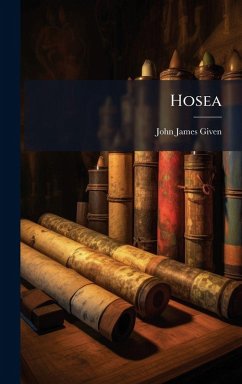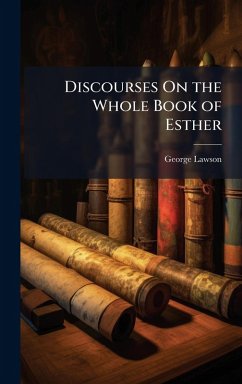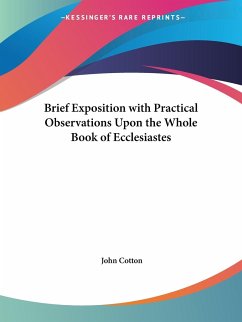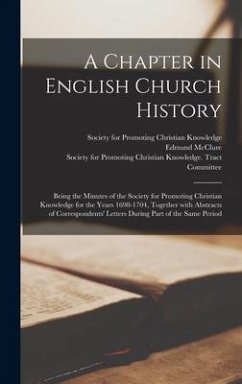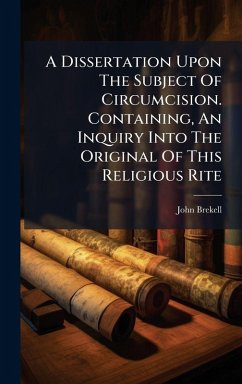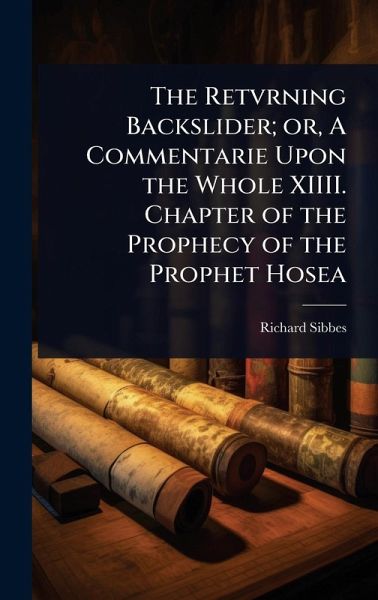
The Retvrning Backslider; or, A Commentarie Upon the Whole XIIII. Chapter of the Prophecy of the Prophet Hosea
Versandkostenfrei!
Versandfertig in über 4 Wochen
37,99 €
inkl. MwSt.
Weitere Ausgaben:

PAYBACK Punkte
19 °P sammeln!
The Retvrning Backslider, written by the eminent Puritan preacher Richard Sibbes, offers a detailed exposition of the fourteenth chapter of the Book of Hosea. Originally published in 1641, this commentary provides profound insights into themes of repentance, divine grace, and the restoration of the fallen. Sibbes, renowned for his compassionate and practical approach to theology, unpacks the scripture verse by verse, making it accessible to both scholars and lay readers of his time. This edition allows a modern audience to encounter Sibbes's thoughtful analysis, reflecting his deep understandi...
The Retvrning Backslider, written by the eminent Puritan preacher Richard Sibbes, offers a detailed exposition of the fourteenth chapter of the Book of Hosea. Originally published in 1641, this commentary provides profound insights into themes of repentance, divine grace, and the restoration of the fallen. Sibbes, renowned for his compassionate and practical approach to theology, unpacks the scripture verse by verse, making it accessible to both scholars and lay readers of his time. This edition allows a modern audience to encounter Sibbes's thoughtful analysis, reflecting his deep understanding of the human condition and the boundless mercy of God. "The Retvrning Backslider" remains a valuable resource for those interested in Puritan theology, biblical interpretation, and the historical context of religious thought in the 17th century. Sibbes's enduring insights continue to resonate, offering comfort and guidance to those seeking spiritual renewal. This work has been selected by scholars as being culturally important, and is part of the knowledge base of civilization as we know it. This work was reproduced from the original artifact, and remains as true to the original work as possible. Therefore, you will see the original copyright references, library stamps (as most of these works have been housed in our most important libraries around the world), and other notations in the work. This work is in the public domain in the United States of America, and possibly other nations. Within the United States, you may freely copy and distribute this work, as no entity (individual or corporate) has a copyright on the body of the work. As a reproduction of a historical artifact, this work may contain missing or blurred pages, poor pictures, errant marks, etc. Scholars believe, and we concur, that this work is important enough to be preserved, reproduced, and made generally available to the public. We appreciate your support of the preservation process, and thank you for being an important part of keeping this knowledge alive and relevant.




